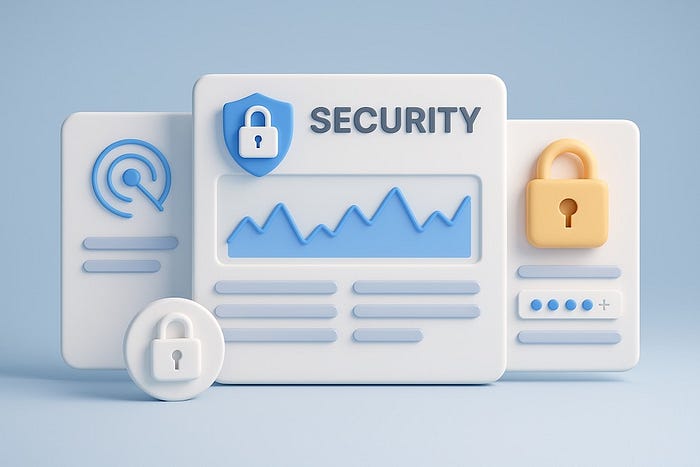The best cybersecurity tools to protect business data include endpoint detection and response (EDR), next-generation firewalls (NGFW), identity and access management (IAM), cloud security, encryption, and SIEM monitoring systems.
You strengthen your business when you implement a layered security approach covering endpoints, networks, identities, and cloud environments. This article outlines the top cybersecurity tools you should prioritize, how they work, and how to integrate them into your operations for stronger resilience.
What are the essential cybersecurity tools every business should use?
At minimum, you need protection across endpoints, networks, identities, cloud services, and monitoring. Without coverage in these areas, you leave exploitable gaps.
Endpoint Detection & Response (EDR) ensures that individual devices are constantly monitored, detecting malware or suspicious behavior. Next-Generation Firewalls (NGFW) go beyond traditional firewalls by analyzing traffic for hidden threats. Identity and Access Management (IAM) reduces credential risks by enforcing multi-factor authentication and least-privilege access.
Cloud security has become non-negotiable. Encryption safeguards data at rest and in transit. Security Information and Event Management (SIEM) centralizes monitoring, enabling you to detect suspicious activity early. When combined, these tools create a defense system that drastically lowers breach risks.
How does EDR protect against modern cyber threats?
EDR tools focus on endpoints like laptops, mobile devices, and desktops. They monitor activities in real-time, identifying threats that slip past traditional antivirus.
When malware or suspicious behavior occurs, EDR isolates the affected device, prevents the spread, and alerts your IT team. This proactive action can stop ransomware before it encrypts company files.
EDR also provides forensic data. You gain visibility into how the attack started, which files were impacted, and which vulnerabilities were exploited. This insight helps you strengthen defenses and prevent repeat attacks.
Why are Next-Generation Firewalls crucial for businesses?
NGFWs act as the gatekeepers of your network. They inspect traffic not just at the surface level, but by analyzing applications, protocols, and user behavior.
Unlike traditional firewalls, NGFWs can block known threats and detect zero-day exploits using integrated threat intelligence. They also prevent unauthorized access to sensitive systems by controlling traffic at granular levels.
As your business expands into hybrid and remote work, NGFWs secure the perimeter and provide the first layer of defense against malicious traffic. Pairing NGFWs with EDR ensures a strong balance between device-level and network-level protection.
How does Identity & Access Management strengthen data security?
IAM ensures that the right individuals access the right resources under the right conditions. It covers password policies, role-based access, and multi-factor authentication (MFA).
Without IAM, compromised credentials can open the door to breaches. With IAM in place, even if passwords are stolen, MFA blocks unauthorized access.
IAM systems also provide centralized oversight. You can see who has access to what, revoke permissions when employees leave, and meet compliance requirements for audits. This minimizes insider threats and reduces attack surfaces.
Why is encryption critical for protecting sensitive data?
Encryption makes stolen data useless to attackers. When files are encrypted, they cannot be read without decryption keys.
Businesses must encrypt data both at rest and in transit. That means encrypting storage systems, databases, backups, and communication channels. Tools like Tresorit make secure collaboration possible with end-to-end encryption.
Regulations in many industries mandate encryption for compliance. Beyond compliance, encryption reassures customers and partners that their data is safe even if your systems are compromised.
What is SIEM and why does monitoring matter?
Security Information and Event Management (SIEM) provides visibility across your entire infrastructure. It collects logs from endpoints, servers, applications, and cloud services.
SIEM analyzes this data, correlates patterns, and highlights anomalies that could signal an attack. You can detect breaches faster, investigate incidents thoroughly, and automate responses to recurring threats.
SIEM is also valuable for compliance reporting. Many regulations require businesses to maintain logs and provide audit trails. With SIEM, you meet those obligations while improving your detection capabilities.
What challenges do businesses face when adopting cybersecurity tools?
The biggest challenge is complexity. Deploying multiple tools often results in overlapping alerts and blind spots if they're not integrated well.
Costs are another hurdle. Enterprise-grade tools come with licensing, staff training, and ongoing maintenance expenses. Smaller businesses must carefully prioritize where to allocate budget.
False positives also drain resources. If your systems generate too many alerts, critical threats can be overlooked. Fine-tuning and skilled staff are necessary to manage security effectively.
Which cybersecurity tools stand out for businesses today?
Several solutions are recognized as leaders in their categories. Lepide is strong in auditing, insider threat detection, and access governance. Tresorit offers secure file sharing with end-to-end encryption. NordLayer provides Zero Trust Network Access for remote workforces. DataDome excels at protecting businesses from bots, fraud, and DDoS attacks.
These providers illustrate how specialized tools complement core defenses. When you combine them with EDR, NGFW, IAM, and SIEM, you build a layered system that protects sensitive business data comprehensively.
Best cybersecurity tools to protect business data
- EDR for endpoint protection
- NGFW for network filtering
- IAM with MFA
- Encryption for sensitive data
- SIEM for monitoring
In Conclusion
You strengthen business resilience when you adopt the right cybersecurity tools. Protecting data requires layering EDR, firewalls, IAM, encryption, cloud security, and SIEM monitoring. By prioritizing integration and user training, you ensure these tools not only reduce risk but also enable faster detection and response.
Explore more strategies and insights for securing your business by visiting my website.

